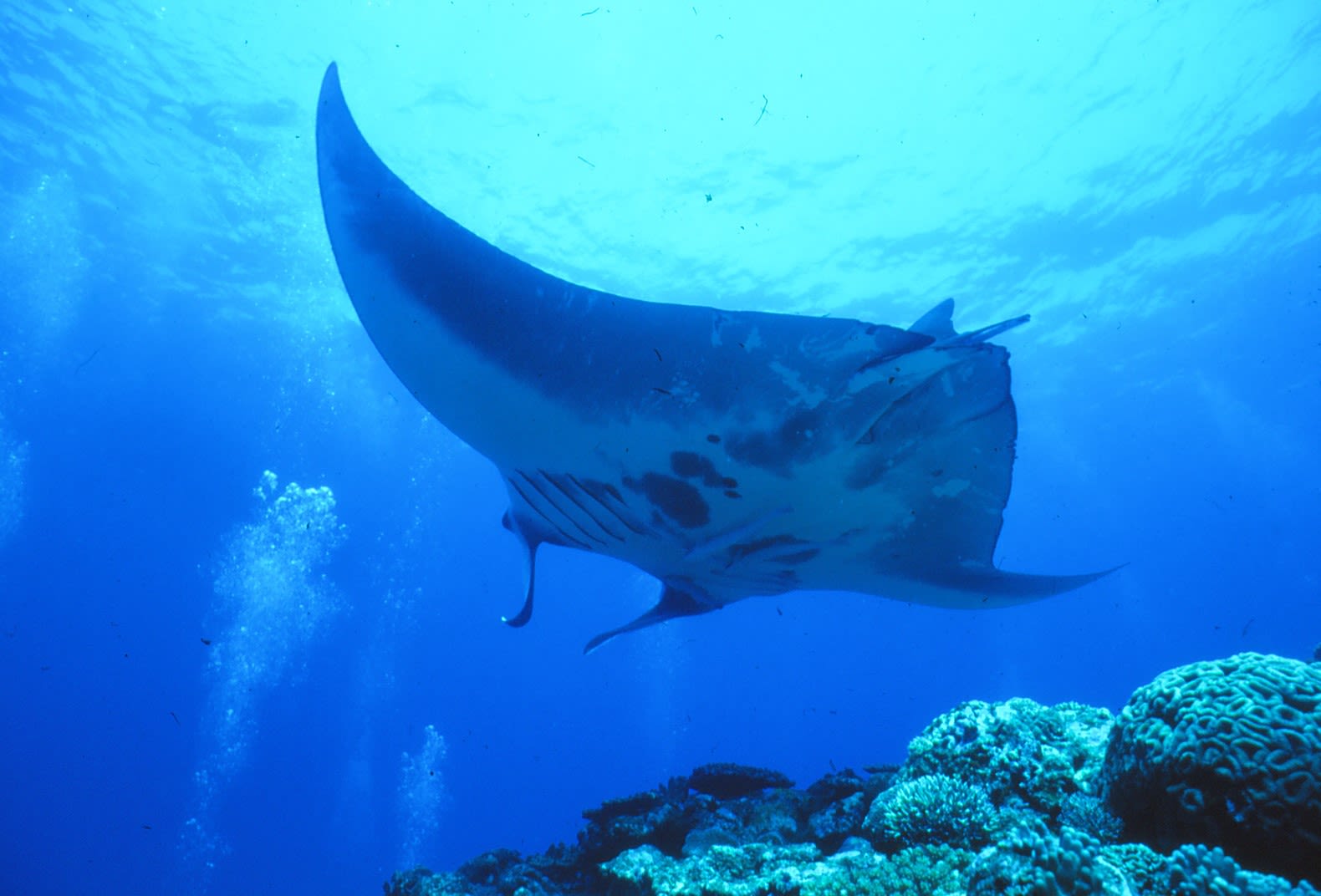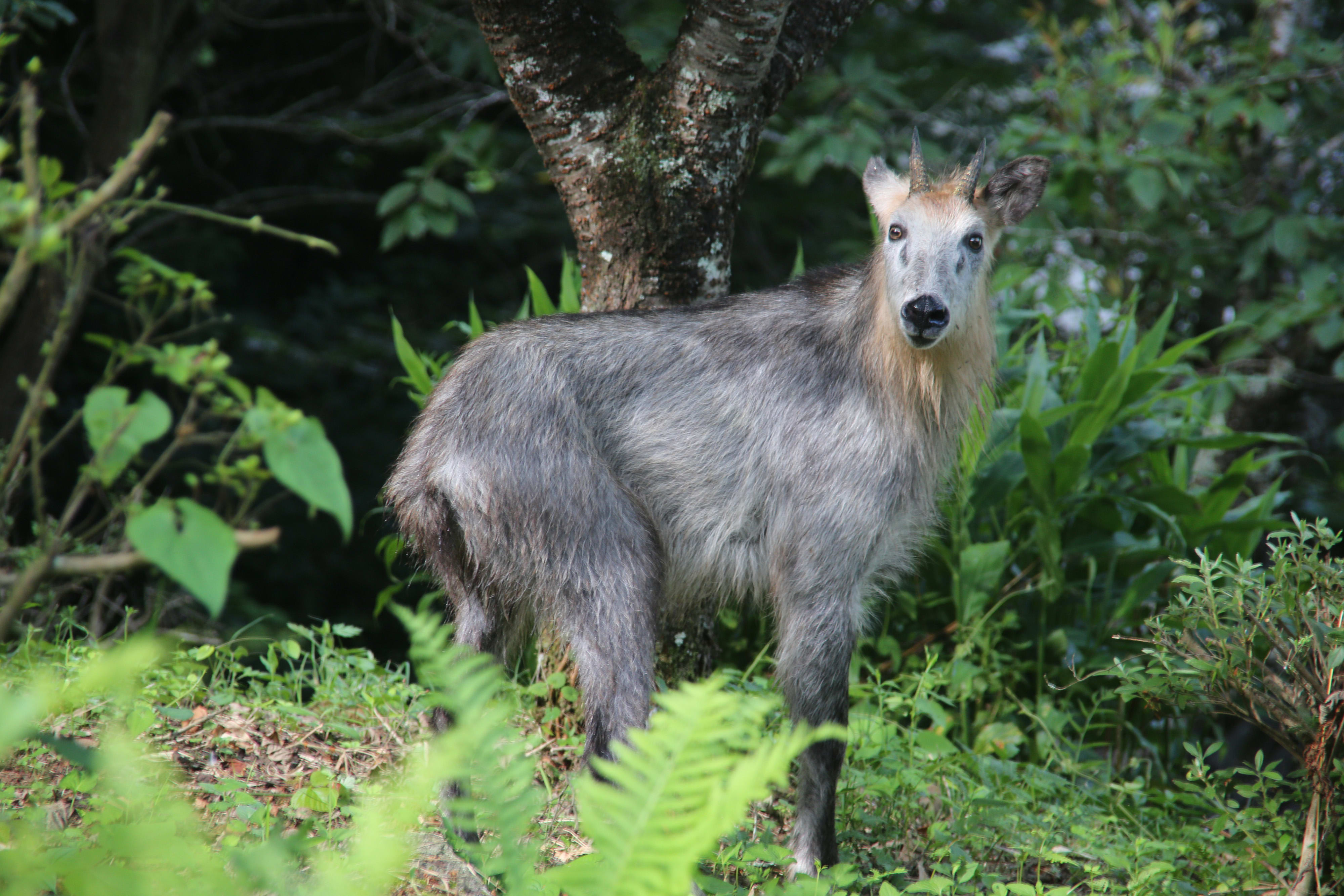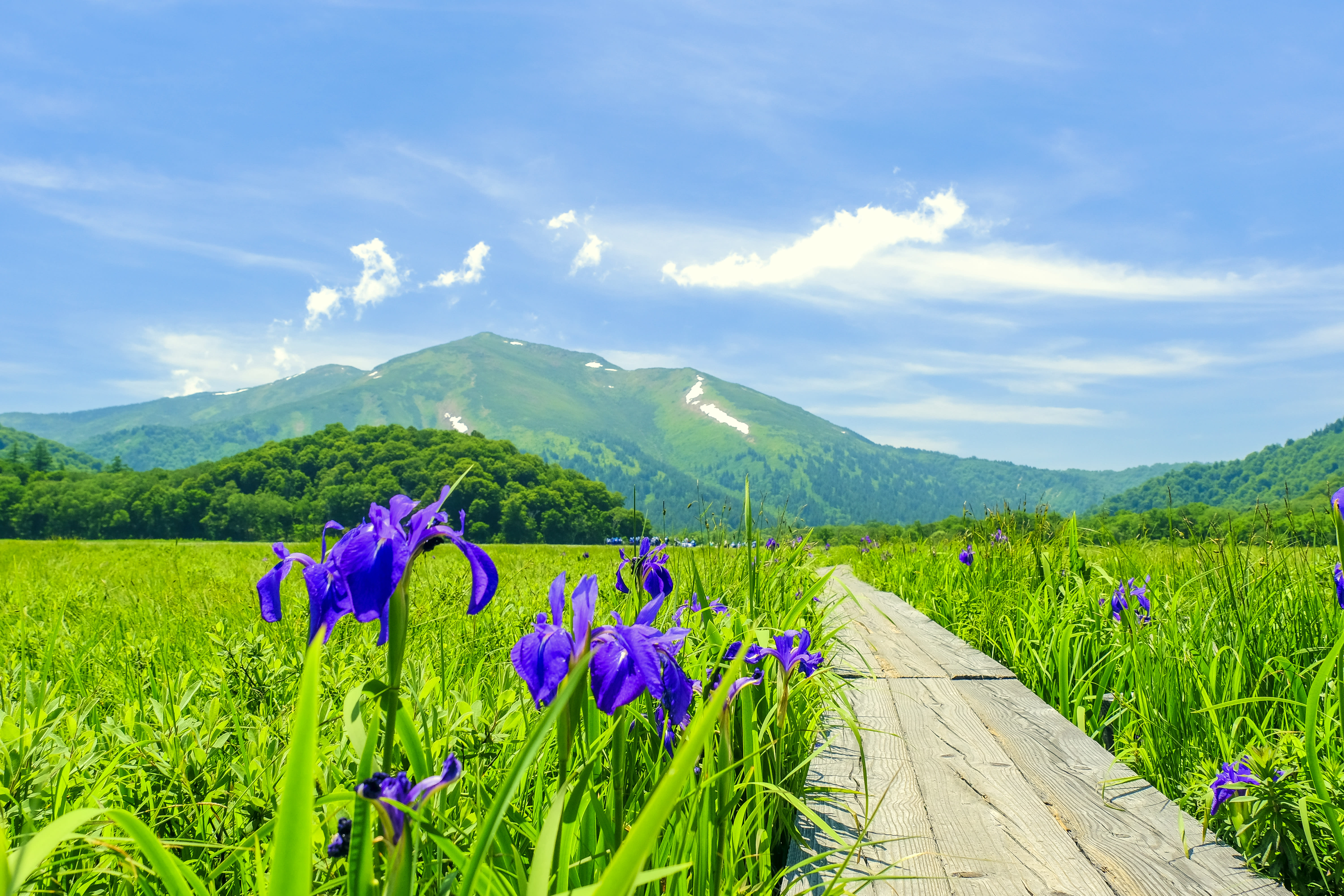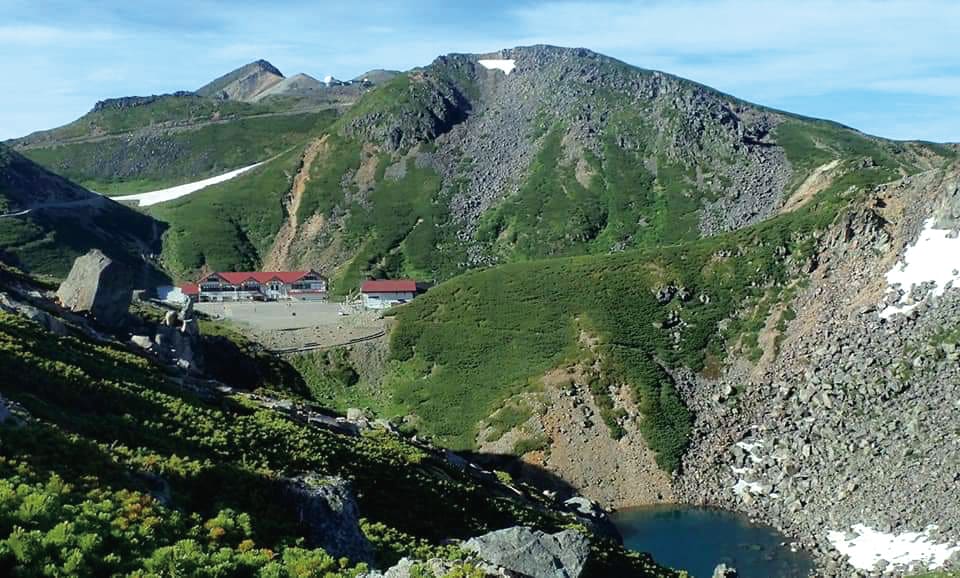
The mangroves of Iriomote-Ishigaki National Park at dawn
Marine wildlife
The glittering seas around Japan are good for more than cooling off on a sweltering midsummer day. They’re also home to a wide range of marine life, from elegant manta rays to playful dolphins. Summer is the perfect time to head out into their world, especially as some of them are only seasonal visitors.

Indo-Pacific bottlenose dolphins swimming the waters of Fuji-Hakone-Izu National Park
Visitors to the islands of Ogasawara National Park have the best chance of seeing sperm whales, as well as spinner and bottlenose dolphins, between May and November. These subtropical islands 1,000 kilometers from Tokyo are also Japan’s largest breeding ground for green sea turtles. They start laying eggs on sandy beaches in March, so keep an eye out for them if visiting in summer.
Fuji-Hakone-Izu National Park is also an excellent place to see and swim with sea turtles and dolphins, who bask in the warm waters of the Izu archipelago. In summer and early fall, you can head out by boat from Mikurajima Island to look for bottlenose dolphins, hopping into the water to swim near the curious cetaceans. Hachijojima Island is the best bet for swimming with sea turtles, who visit in July and August. The waters are shallow, so this memorable wildlife experience is also safe for children.

A green sea turtle glides through the waters of Keramashoto National Park
The subtropical islands of Okinawa have excellent snorkeling and scuba diving, with the Keramashoto and Iriomote-Ishigaki national parks providing protected habitats for sea turtles, manta rays and a huge variety of colorful fish and corals. The sandy beaches of the Kerama Islands—such as Ama, Nishibama, and Tokashiku—play host to green, hawksbill and loggerhead sea turtles around May to August. To see manta rays, take a scuba diving trip from Ishigaki’s Kabira Bay between June and October.

A manta ray in Kabira Bay, Iriomote-Ishigaki National Park
Other wildlife
There are plenty more wildlife experiences waiting for you on dry land. As butterflies emerge from their cocoons and hawks leave their nests, mornings are accompanied by melodic birdsong, and balmy afternoons by the constant hum of cicadas.
You can spot deer in several places throughout the country. Nikko National Park is easily accessible from Tokyo, the lush forests of Okunikko making a welcome contrast to the bustle of the city. As well as deer, you’re likely to encounter plenty of birds here, and possibly Japanese macaques and Japanese serows.
Early summer is one of the best times to look for reclusive serows. Their calves are usually born in May or June, so you might manage to spot a mother and child quietly picking their way through the forests of Joshin’etsukogen National Park.

A Japanese serow spotted in Joshin'etsukogen National Park
In the northeast of Hokkaido, Kushiroshitsugen National Park offers a very different wildlife experience. About half of the world’s population of red-crowned cranes lives around Kushiro’s wetlands, due to conservation efforts in the area. Most visitors come in winter to watch their courtship dances, but seeing the elegant white birds against a fresh green backdrop is just as beautiful—and it’s usually less crowded.
Summer flowers

Arctic irises dot the landscape in Oze National Park
Summer is a season of natural abundance in Japan. Leaves are vibrant and green, irises and hydrangeas come into bloom, and alpine flowers bring color to highland meadows.
The Midagahara area of Bandai-Asahi National Park comprises a series of marshes on Mount Gassan, the highest peak of the three sacred mountains of Dewa Sanzan. Gassan is only accessible for hiking in the summer months—you can still ski here in early July—when the snow melts enough for a carpet of delicate alpine flowers to bloom on the mountainside.
In Oze National Park, Japan’s highest marshland provides an ideal habitat for eye-catching alpine flowers. Ozegahara Marsh is crisscrossed with boardwalks, making it easy to see the bold orange daylilies, deep purple irises and delicate white water lilies up close.

Kitadake-so: endemic alpine flowers found on Mount Kitadake's slopes in Minami Alps National Park
Minami Alps National Park is another mountainous area with beautiful meadows of alpine flowers blooming each summer. Hikers who reach the top of Mount Kitadake in June or July may even see Kitadake-so (Callianthemum hondoense), an alpine perennial only found here.

Views of Mount Karakuni in Kirishima-Kinkowan National Park
In Kirishima-Kinkowan National Park in southern Kyushu, the volcanic soils provide fertile ground for rose mallows, cosmos flowers and vibrant Kyushu azaleas. Walking routes like the Mount Karakuni and Onamiike Crater Lake Hiking Trail, which circles Japan’s highest crater lake, provide sweeping views.
Mountain hikes
When the summer heat descends, escape up into the mountains for fresh air and breathtaking views. Fuji-Hakone-Izu National Park is easy to reach from Tokyo, and with Mount Fuji’s climbing season only beginning in June, the summer months are the perfect time to visit. As well as tackling Japan’s most famous peak, you can enjoy hikes in the national park’s Fuji Five Lakes area.

Hiking Mount Akita-Komagatake in Towada-Hachimantai National Park
Just like Mount Fuji, there are several ways to approach many of Japan’s most iconic peaks. In Towada-Hachimantai National Park, there are multiple trails up sacred Mount Iwate, each with a different level of difficulty and passing through varied landscapes—striking lava fields, peaceful birch forests, powerful waterfalls, and serene crater lakes.
In central Japan, Chubusangaku National Park encompasses the wild scenery of the Northern Japan Alps. The region is famous for its hiking routes, which often start at ski resorts such as Tsugaike Kogen, Hakuba and Happo One. Many of the resorts have hot springs, perfect for easing aching post-walk muscles. For an introduction to the area’s alpine flowers and soaring peaks, join a guided nature tour at Tsugaike Nature Park.
Chubusangaku is also famous for the Tateyama-Kurobe Alpine Route, open mid-April to mid-November. In early June, sections of the route near Murodo, from where you can access various hiking trails, are still hemmed in by towering walls of snow.

Mount Eboshi in Bandai-Asahi National Park
There are plenty of multi-day treks in Japan’s national parks, too, which give you a chance to immerse yourself in the majestic mountainous landscapes. The Azuma Ridgeline Trail in Bandai-Asahi National Park is one of the best, taking in wetlands, wildflower meadows, lakes and multiple summits along the way.
Head to the northern island of Hokkaido to really beat the heat; this escapes both the rainy season and the worst of the summer humidity. The wild, mountainous scenery of Daisetsuzan and serene lakes of Akan-Mashu national parks are particularly appealing on warm summer days.
Escape the heat

Canoeing through Yambaru National Park's mangroves in summer
Climbing a mountain is one way to escape the heavy humidity of the Japanese summer, but it’s not the only way.
With Japan’s many lakes and beautiful stretches of coastline, you’re never far from a good spot for water sports like kayaking, stand-up paddleboarding, snorkeling or scuba diving. You could try paddleboarding on Lake Chuzenji in Nikko National Park, sea kayaking in Daisen-Oki National Park off southern Honshu, or canoeing through the mangrove forests of Yambaru National Park in subtropical Okinawa.
Other adventurous options for beating the heat include caving, canyoning, and even shower climbing. This unusual activity, which you can try in areas like Norikura Kogen in Chubusangaku National Park, involves scrambling up mountain streams and jumping into cooling pools.

Cool off near the summit of Mount Norikura in Chubusangaku National Park
If you don’t want to take a dip in snowmelt-fed streams, you could head to a cool, shady forest for a hike. Around two-thirds of Japan is wooded, and it’s the home of forest bathing (shinrin-yoku), a practice of walking meditatively between the trees to take in the healing atmosphere. Hiking to a shrine, such as ancient Ogamiyama-jinja Okumiya Shrine in Daisen-Oki National Park, is a great way to try this out. Yakushima (Island) National Park is another excellent place to experience it. Some of the island’s trees are thousands of years old, and its densely forested interior is suffused with a sacred and mysterious atmosphere.
A final method for escaping the summer heat is to focus your activities in the evenings. Secluded spots with little light pollution are perfect for stargazing, and several national parks offer special stargazing activities. In Akan-Mashu, you can watch the night sky from an observatory; Chubusangaku holds star-viewing dinners; and on Mount Iwate in Towada-Hachimantai, you can take a dip in natural hot springs under the stars.
Whether you embrace the heat or escape it, summer is a great time to explore Japan’s national parks. From clear night skies and alpine flowers to water sports and hiking, there’s something for everyone to enjoy in the long days of the Japanese summer.
Written by Rebecca Hallett











